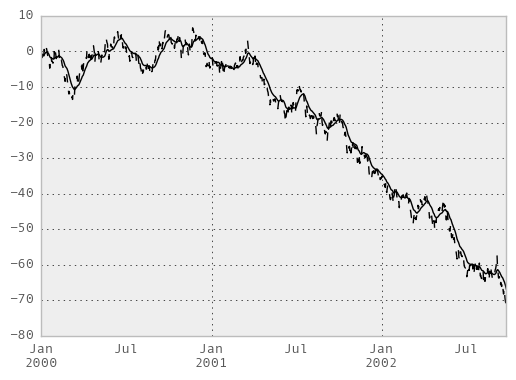
This makes moving the charts around, zooming, and general chart manipulation keep things in line. they just keep on coming! The fourth parameter we're using here is a parameter telling matplotlib that we'd like to always have the x-axis line up on both charts. Similar to the mean filter, the EWMA filter is a low pass filter that eliminates high frequency components in the measured signal. An EWMA filter smoothes a measured data point by exponentially averaging that particular point with all previous measurements. ax2 = plt.subplot(2, 1, 2, sharex = ax1)īut wait, there's more! It looks like we had a 4th parameter. Exponentially weighted moving average (EWMA) is a popular IIR filter. If you had a 2x2, then #1 would be top left, #4 would be bottom right, #2 would be top right, and #3 would be bottom left. #1 would be the top, #2 would be the bottom.

So, if you have a 2 x 1, that means you have only 1 column of subplots, but two rows. The first is how many "Tall" you want (height), the second parameter is how many wide (width) you want. When you add subplots, you have three parameters.

Let's compare price to standard deviation. Hey, that was easy! Now let's plot it all. Next, we make our standard deviation column: df = pd.rolling_std(df, 25, min_periods=1) The only major thing to note is that we're going to be plotting on multiple plots on 1 figure: import pandas as pdĭf = pd.read_csv('sp500_ohlc.csv', index_col = 'Date', parse_dates=True)

With Pandas, there is a built in function, so this will be a short one. In this Pandas with Python tutorial, we cover standard deviation.


 0 kommentar(er)
0 kommentar(er)
